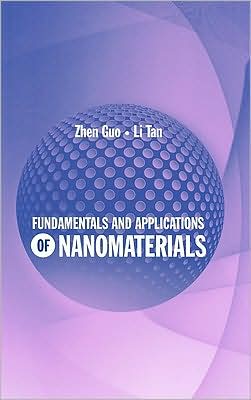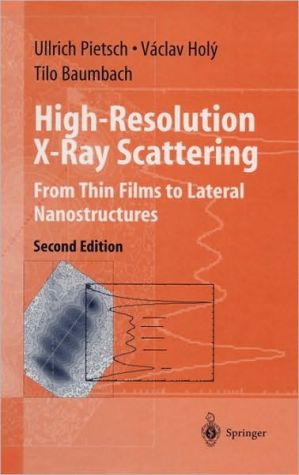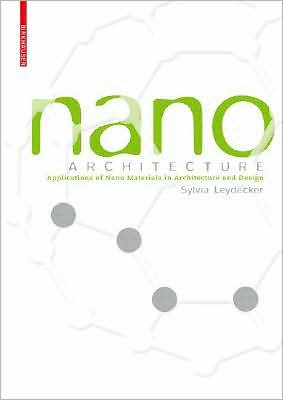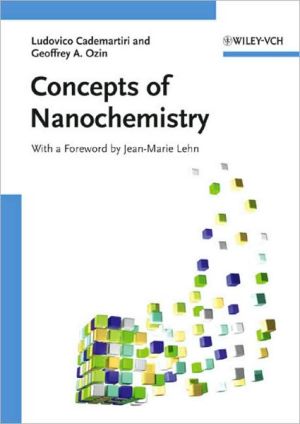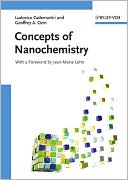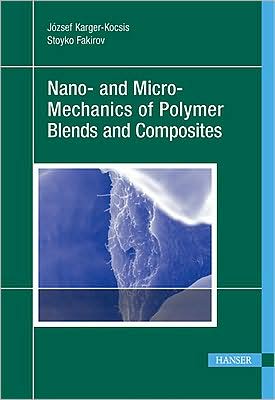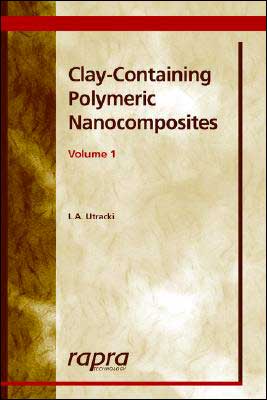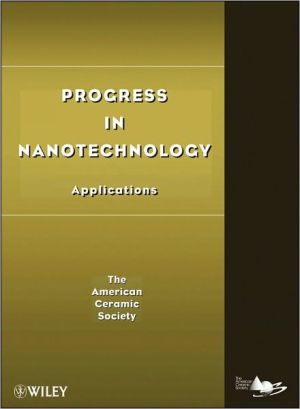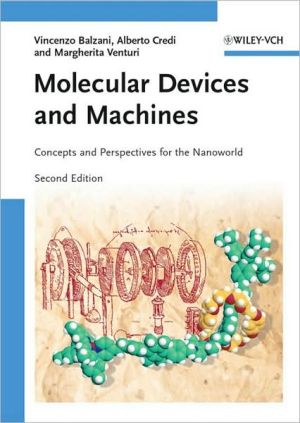Fundamentals and Applications of Nanomaterials
This timely resource offers a broad introduction to nanomaterials, covering basic principles, technology, and cutting-edge applications. From quantum mechanics, band structure, surface chemistry, thermodynamics, and kinetics of nanomaterials, to nanomaterial characterization, nanoparticle synthesis, nanoelectronics, nanostructural materials, and nano-bio materials, this groundbreaking volume provides a solid understanding of a wide range of fundamental topics and brings you up-to-date with...
Search in google:
This timely resource offers engineers and researchers with a broad introduction nanomaterials, covering basic principles, technology, and cutting-edge applications. From quantum mechanics, band structure, surface chemistry, thermodynamics, and kinetics of nanomaterials, to nanomaterial characterization, nanoparticle synthesis, nanoelectronics, NEMS, and Nano-Bio materials, this groundbreaking volume provides a solid understanding of a wide range of fundamental topics and brings professionals up-to-date with the latest developments in the field. This informative book is supported with more than 160 illustrations.
Foreword xiiiPreface xvPart I Fundamentals of Nanomaterials Science 11 Quantum Mechanics and Atomic Structures 31.1 Brief History of Quantum Mechanics 31.2 Photoelectric Effect and Duality Nature of Light 51.2.1 Photoelectric Effect 61.2.2 Einstein's Explanation 71.2.3 Duality of Light 91.3 Duality of Electrons 101.3.1 De Broglie's Hypothesis and Electrons as Waves 111.3.2 Time Independent Schrodinger Equation 121.3.3 Free Electrons 161.4 Electrons in Potential Well 171.4.1 1D Infinite Potential Well 171.4.2 3D Infinite Potential Well 191.5 Atomic Structure and the Periodic Table 211.5.1 The Hydrogen Atom 211.5.2 The Helium Atom 221.5.3 The Periodic Table 232 Bonding and Band Structure 252.1 Classic Atomic Bonding 252.2 Atomic Bonding in Molecules: LCAO Theory 262.2.1 Two-Atom Molecule 292.2.2 Three-Atom Molecule 312.2.3 Four-Atom Molecule 312.2.4 Six-Atom Molecule (Benzene Ring) 322.2.5 Many-Atom Molecule 342.3 Atomic Bonding in Crystalline Solids: Band Theory 352.3.1 Energy Band in Solids 362.3.2 Partially Filled Energy Band for Metals 372.3.3 Energy Band for Insulators and Semiconductors 382.4 Bonding and Band Structures in Nanocrystal Materials 402.4.1 Top-Down Method for Quantum Wells and Dots 412.4.2 Bottom-Up Method for Carbon-Based Nanocrystals 44References 473 Surface Science for Nanomaterials 493.1 Crystal Structure and Crystallography 493.1.1 Crystal Structures 493.1.2 Crystallography 503.1.3 Close-Packed Directions, Planes, and Structures 513.2 Surface Crystallography 553.2.1 Surface Structure for Close-Packed Structures 553.2.2 SurfaceStructure for BCC Structures 563.2.3 Surface Symmetry 573.3 Surface Energy 573.3.1 Crystallographically Preferred Surface 593.3.2 Wulff Constructions and Equilibrium Shape for Nanoparticles 593.4 Surface Reconfigurations 613.4.1 Surface Relaxation and Reconstructions 623.4.2 Adsorption 673.5 Surface Area and Surface Thermodynamics 683.5.1 Surface Area in Nanomaterials 693.5.2 Nanoparticle Nucleation 703.5.3 Wetting 71References 734 Nanomaterials Characterization 754.1 X-Ray Diffraction for Nanomaterials Characterization 754.1.1 X-Ray Diffraction and the Laue Method 764.1.2 Bragg's Law 774.1.3 X-Ray Diffraction in Nanomaterials 784.2 Electron Microscopy for Nanomaterials Characterization 804.2.1 Interaction Between Electron Beams and Solids 814.2.2 Transmission Electron Microscope (TEM) 834.2.3 Scanning Electron Microscope (SEM) 864.2.4 Scanning Probe Microscope (SPM) 874.3 Surface Analysis Methods 894.3.1 Auger Electron Spectroscope (AES) 904.3.2 X-Ray Photoelectron Spectroscope (XPS) 904.3.3 Secondary Ion Mass Spectroscope (SIMS) 91References 91Part II Nanomaterials Fabrication 935 Thin-Film Deposition: Top-Down Approach 955.1 Thin-Film Deposition Mechanism 955.1.1 Homogeneous Film Growth Mechanisms 955.1.2 Heterogeneous Film Growth Mechanisms 975.2 Thin-Film Deposition Methods 995.2.1 Physical Vapor Deposition (PVD) 1005.2.2 Chemical Vapor Deposition (CVD) 102Reference 1066 Nanolithography: Top-Down Approach 1076.1 Introduction 1076.1.1 Parallel Replication 1086.1.2 Serial Writing 1106.2 Nanoimprint Lithography (NIL) 1106.2.1 NIL Process 1106.2.2 3D Patterning via NIL 1116.2.3 Air Cushion Press 1116.2.4 Sequential Embossing/Imprinting Lithography (SEIL) 1136.3 AFM Lithography 1146.3.1 Scratching and Nanoindentation 1156.3.2 Nanografting 1176.4 Polymer Pen Lithography (PPL) 1196.5 Templated Self-Assembly of Block Copolymers 122References 1267 Synthesis of Nanoparticles and Their Self-Assembly: Bottom-Up Approach 1297.1 Synthesis of Nanoparticles 1297.1.1 Coprecipitation 1307.1.2 Sol-Gel Process 1327.1.3 Microemulsions 1357.1.4 Hydrothermal/Solvothermal Methods 1367.1.5 Templated Synthesis 1387.1.6 NPs of Organic Semiconductors 1387.2 Self-Assembly of Nanoparticles 1407.2.1 Hydrogen Bonding-Based Assembly 1407.2.2 Electrostatic Assembly 1417.2.3 Shape-Selective Assembly 1427.2.4 Hydrophobic Assembly 1447.2.5 Template-Assisted Assembly 1447.2.6 Collective Properties of Self-Assembled Nanoparticles 1467.3 Conclusion 147References 147Part III Nanomaterials Properties and Applications 1518 Nanoelectronic Materials 1538.1 Single-Electron Transistors (SETs) 1538.1.1 Single-Electron Capacitor 1548.1.2 Operating Principles for SETs 1588.1.3 Quantum Effect on SETs 1628.1.4 Fabrication of SETs 1658.2 Carbon Nanotube-Based Nanoelectronic Device 1708.2.1 Introduction to CNTs 1708.2.2 Fabrications of CNTs 1738.2.3 CNT-Based Devices 1758.3 Spintronics 1788.3.1 Operating Principles of Spintronics 1788.3.2 Spintronics Devices 180References 1849 Nano Biomaterials 1879.1 Introduction 1879.2 Biomimetic Nanotechnology 1889.2.1 DNA Nanotechnology 1889.2.2 Structural Biomimicry 1919.3 Nanostructures in Biodiagnostics 1989.3.1 Nanoparticle-Based Detection Methods 2009.3.2 Nanowire- and Nanotube-Based Detection Methods 2019.4 Nanostructures in Cells Study 2029.4.1 Microarray Platform as a Research Tool 2029.5 Tissue Engineering and Drug Delivery 205References 20510 Nanostructural Materials 20910.1 Nanograin-Sized Structural Materials 20910.1.1 Why Grain Refinement? 21010.1.2 General Approaches for Grain-Refinement 21010.2 Nanoindentation 21310.2.1 Principles of Nanoindentation 21410.2.2 In Situ Nanoindentation 21410.3 Mechanical Instability of Nanostructures 21910.3.1 Wrinkling of Thin Films 21910.3.2 Buckling of Spheroidal Core/Shell Structures 22410.3.3 Buckling of Nanobeams 22510.3.4 Collective Buckling Model for Periodic Array of Nanostructures 229References 235About the Authors 239Index 241
